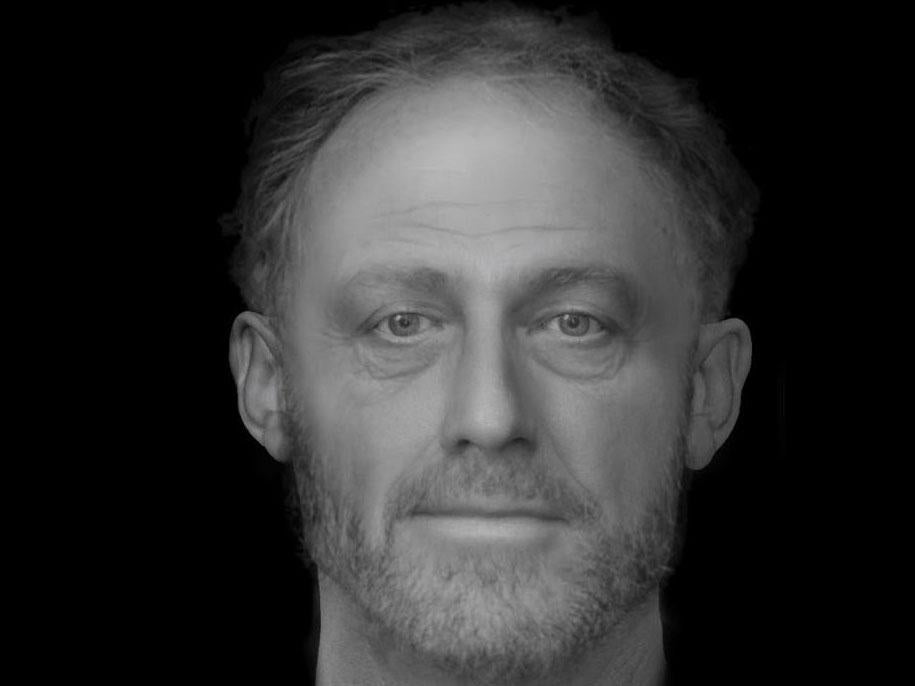What an ordinary 13th century man looked like, scientists reveal
'He was a working class person, perhaps with a specialised trade of some kind'

He looks like a friendly sort of guy, a geography teacher who helps out with the local football team or perhaps a social worker who visits an elderly neighbour for a chat in his spare time.
But, in fact, this is the reconstructed face of a man who died in Cambridge more than 700 years ago.
It is believed he was homeless when he died as his body was found in the grounds of the Hospital of St John the Evangelist, which was a charity that provided refuge for those who had nowhere else to stay, were ill or infirm.
His skeleton also shows signs that he had lived a tough life before his death sometime after the age of 40.
Professor John Robb, of Cambridge University, who worked with experts at Dundee University to reconstruct the face, said the man “had quite a robust skeleton with a lot of wear and tear from a hard working life”.
“We can't say what job specifically he did, but he was a working class person, perhaps with a specialised trade of some kind,” he said.
“One interesting feature is that he had a diet relatively rich in meat or fish, which may suggest that he was in a trade or job which gave him more access to these foods than a poor person might have normally had.
“He had fallen on hard times, perhaps through illness, limiting his ability to continue working or through not having a family network to take care of him in his poverty.”
Analysis of his teeth showed he had stopped growing enamel twice while young, a sign that he was either seriously ill or starving.
The back of his skull had also suffered a heavy blow, causing damage that had healed by the time he died.
“He has a few unusual features, notably being buried face down which is a small irregularity for mediaeval burial,” said Professor Robb.
“But, we are interested in him and in people like him more for ways in which they are not unusual, as they represent a sector of the mediaeval population which is quite hard to learn about: ordinary poor people.
“Most historical records are about well-off people and especially their financial and legal transactions – the less money and property you had, the less likely anybody was to ever write down anything about you.
“So skeletons like this are really our chance to learn about how the ordinary poor lived.”
The man, known simply as Context 958, was among 400 complete skeletons found when the graveyard was excavated between 2010 and 2012. They have been dated from the 13th to the 15th centuries.
Join our commenting forum
Join thought-provoking conversations, follow other Independent readers and see their replies
Comments